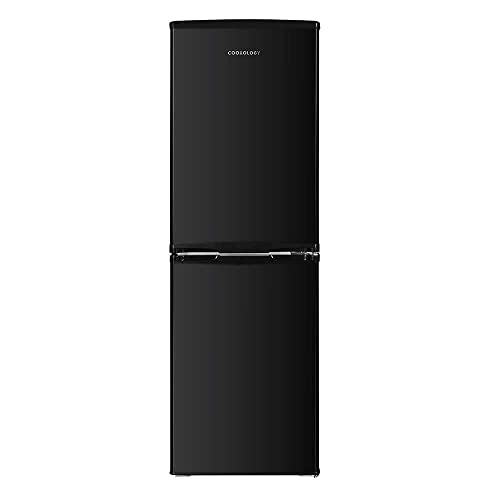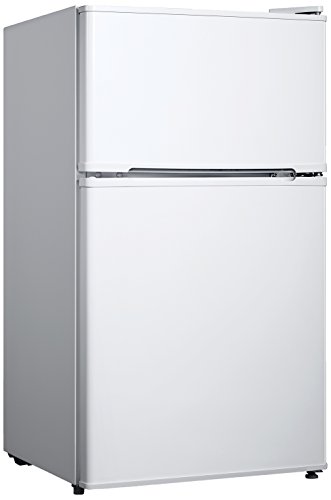
Black Shadows © 2013 -
Mentions légales/Policies
Mentions légales/Policies

How to Maintain a Frost Free Fridge and Freezer
A frost free fridge and freezer removes the need to defrost manually. This can save you time, effort and electricity when compared to a traditional refrigerator/freezer.
 Food that has been frozen can be damaged if ice crystals form on the packaging. These crystals may cause freezer burn or alter the texture of food.
Food that has been frozen can be damaged if ice crystals form on the packaging. These crystals may cause freezer burn or alter the texture of food.
Defrost
The process of defrosting your freezer isn’t glamorous or fun however it’s an essential aspect of maintaining the fridge and freezer. Each when you open the door of your freezer warm air infiltrates which causes moisture to condense and freeze on the interior surfaces. The frost can affect the freezer’s temperature control, causing it to work overtime and consume more energy. It can also reduce food flavor and quality, and cause freezer burn.
Defrosting a freezer on your own is the best choice, but it can take a long time. In the event of a crisis, a hairdryer or a handheld steam cleaner can speed up the process. Just be sure to turn off and unplug the freezer, remove all frozen foods, and clean up any water that spills before you begin working.
Make sure to have towels, or a plastic liner, prepared prior to starting the process of defrosting. This will absorb any water that may spill. It’s a good idea to empty out your freezer completely to allow you to reorganize the food items that remain and eliminate expired or old items. When the defrosting process has been completed, you must thoroughly clean and dry your freezer before turning it on.
To speed up the natural defrost process open and close the freezer door a few times in order to help the temperature to rise. Take all drawers and shelves off to make it easier to reach the frozen ice. You can also place some old towels or newspapers that are highly absorbent on the floor to soak up any puddles that form from melting the ice.
While the ice melts, keep a heated spoon or plastic spatula nearby to break off any large chunks of ice that might accumulate on the interior walls. Avoid using sharp objects like forks, knives or Ice picks when trying to break through the ice. This could cause damage and leaks into the freezer. Don’t forget to wipe down and rinse the drawers and shelves you can remove after the ice has been removed. After cleaning the freezer, plug it in and let it run for a few hours to return to normal temperatures.
Clean
A regular cleaning is the best method to avoid the build-up of spores and food odors. Get rid of any food item that is damaged or over its best. Clean all shelves and drawers with soapy water using a damp cloth (I use Seventh Generation Natural Dish Liquid). Then, dry them. I also wipe down the freezer using a cloth coated in a solution comprising baking soda and vinegar or water. Scrubbing tough stains with a non-scratch brush may be required. I also vacuum the coils that are located at the back of my refrigerator using a spray. This removes all pet fur, dirt and dust that has accumulated in the hard-to-access areas.
If you have fridges that are frost-free it is not necessary to defrost it as often as other models. Frost-free refrigerators come with an engine that circulates cold air to cool the food, making it unnecessary to do manual defrosting. However, it is important to clean the refrigerator once a week, tossing any food items that are past its expiration date, and getting rid of all the old jars, bottles and soy sauce packets.
To make the process of defrosting your freezer simpler take all food items from the freezer and place it temporarily into another freezer, a cooler with ice packs or in an enclosed box with blankets. During this process, you should protect the floor of the freezer by using an old cloth. You can remove any ice that remains after the freezer has been defrosted with an ice scraper made of plastic.
If your fridge has an automatic defrost feature, you will see an indicator light that will inform you when it’s time to defrost. Clean out the freezer and place it on the counter to prevent losing frozen food during the defrost. You can then restock it with frozen foods that have an extended shelf life. Then, you can put the old towel at the bottom of the freezer to capture any water that drips as it melts.
Maintaining
If the evaporator is coated with frost coil and it freezes and cause the tall fridge freezer frost free to work harder and use more energy. Regular maintenance is crucial. Unplugging the freezer and cleaning the evaporator coil can prevent this from happening in the first place.
When the defrost is working correctly, a layer will form on the evaporator with an uniform pattern. If there is ice build-up on the evaporator that is not caused by a defrost problem it could be an indication of a faulty timer or defrost termination thermostat.
In some older models, the return and supply air duct to and from the freezer could be blocked by dirt, pet hair or food leftovers. This makes the compressor work harder and creates excess heat. This heat will then move into the refrigerator cabinet, causing temperatures to rise. This problem can be reduced by making sure that the freezer door gasket isn’t damaged and is tightly sealed.
The frequent openings of the freezer may also allow moist air from the room to get into the appliance. This creates an environment where ice and frost can form more quickly. The freezer must be kept tightly shut to limit the possibility of cheap frost free fridge freezer and ice.
Clean the drain trough for the evaporator regularly to ensure that it is not plugged with food debris or ice. This can be accomplished with handheld vacuum cleaners or a special coil cleaner for refrigerators (usually using a brush that is able to get into hard to reach areas).
Keep the freezer free of obstructions that could block air flow or the condenser. To get rid of food residues and to prevent odours from forming, clean the interior walls and shelves using a mixture of hot water, dish soap or baking powder. Vents for air between freezer and refrigerator compartments must not be blocked since this could result in an insufficient circulation of air, which could increase humidity in the appliance.
Repair
There are a variety of reasons your frost-free fridge freezer might not be functioning properly. The majority of these problems can be fixed easily, but some require professional assistance. The problem is usually caused by something that blocks air from moving into and from the freezer section. This can be caused by the over-packaging of food items or clogged ventilation gaps, and the door being left open for too long.
It is crucial to unplug your refrigerator prior to making any repairs or maintenance. This prevents the risk of electric shock and allows accumulated frost to melt naturally.
If your refrigerator isn’t cooling, it could be due to a problem with the defrost. In this type of fridge and freezer, a heater is continuously turned on to melt any frost that has formed on the coils that evaporate. The melted frost runs through a drain tube and into a pan in the back of the freezer. It eventually evaporates into the ambient air. The defrost-timer may need to be replaced if it’s malfunctioning.
It’s also possible that a damaged seal is blocking cold air from getting into the freezer compartment of your refrigerator. It can be fixed by cleaning the seal using warm water and a bit of soap. Make sure there are no frost fridge freezer objects blocking the freezer vents or resting against back wall of the refrigerator.
If the gasket is worn or damaged If it is damaged or worn, you can replace it. The majority of major appliance manufacturers offer replacement parts in-person including freezer gaskets. It is important to know that replacing the gasket in a freezer should only be done by a certified professional.
You could also have a problem with the fan that circulates the air in your freezer section of your fridge. In this instance you’ll likely hear a sound of clicking when the fan turns on. The evaporator’s ice has become too thick, and is causing the fan blades to become damaged. This is an issue that requires to be diagnosed by a professional.